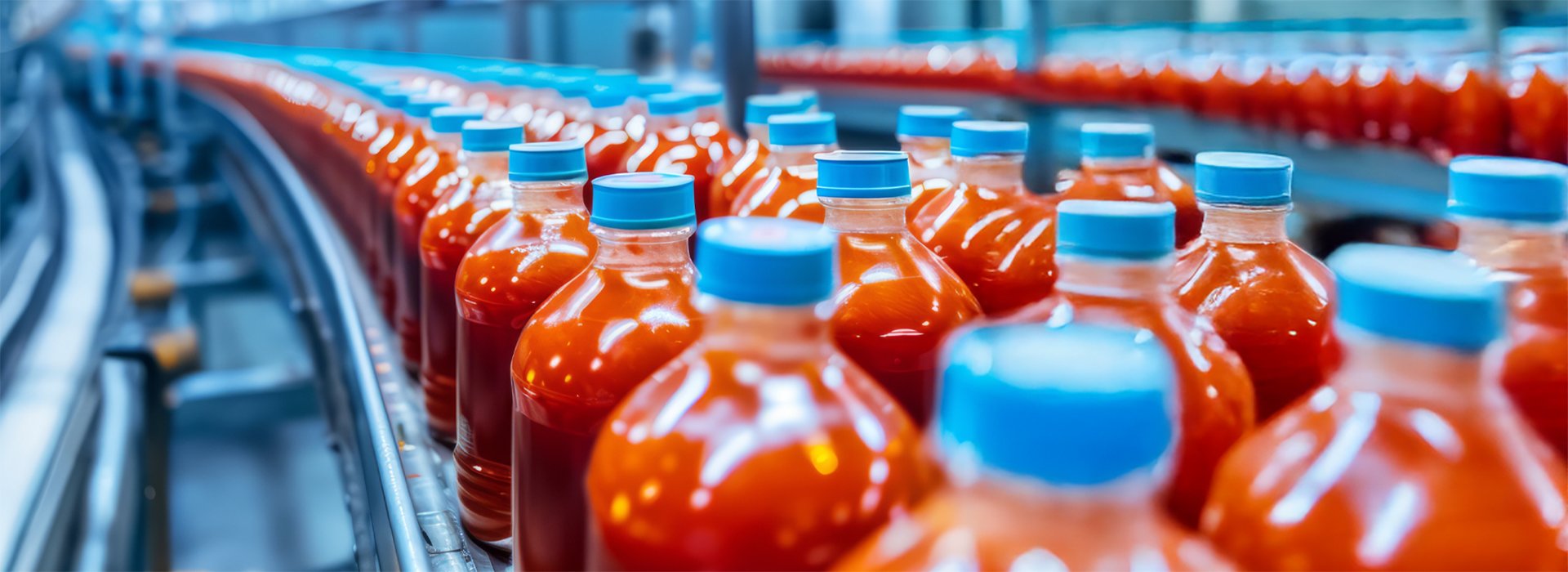Driving growth in the F&B sector through digital transformation
The Food and Beverage (F&B) industry stands at the crossroads of evolving consumer demands, regulatory pressures, and rising operational complexities. In such a landscape, the question isn’t whether companies should embrace digital transformation but how quickly they can leverage data-driven tools to adapt, thrive and grow.

As disruptions become the norm rather than the exception, digital technologies offer the agility and anticipation needed to mitigate risks, drive efficiency, build sustainable practices and meet consumer demand. At the same time, data-driven tools can support growth ambitions by strengthening supply chain resilience and a company’s ability to comply. This transformative ability is creating a strong appetite for digital technologies. According to Forbes1, the digital transformation market grew from approximately $92bn in 2014 to $469.8bn in 2020 and is expected to reach $1,009.8bn by 2025.
In particular, internet of things (IoT) devices are big beneficiaries of a growing demand for digital solutions due to the increasing development of wireless networking technologies. Powered by artificial intelligence (AI) algorithms, IoT devices can enable predictive analytics by transforming vast amounts of data into actionable insights. According to a report by Data Bridge Market Research2, the global internet of things (IoT) in the food market is expected to reach $10.74bn by 2028, representing an annual growth rate of 9.50% between 2021 and 2028.
However, driving growth is not just about having the right digital technologies in place; it’s also about knowing how to harness data in a way that allows F&B companies to respond quickly to market shifts. It’s the ability to anticipate change and support operational agility that enables companies to pivot strategies, optimise performance and gain a competitive edge. This capacity to leverage data-driven technologies also ensures improved supply chain visibility and compliance with environmental, social, and governance (ESG) standards, while meeting consumer expectations.
The global IoT in the food market is expected to reach $10.74bn by 2028, representing an annual growth rate of 9.50% between 2021 and 2028.
Harness data for strategic decision-making
Harnessing data to make informed decisions and respond proactively to disruptions is a key efficiency-improver. Unforeseen events such as Covid, geopolitical instability, or climate-related issues have required F&B companies to become more efficient in sourcing raw materials and suppliers. However, there is a limit to the high levels of efficiency needed without the use of automation and digital tools that improve accuracy, speed and flexibility, while also reducing costs. Predictive analytics helps forecast demand and optimise inventory, reducing waste and improving efficiency. For example, using AI to analyse sales data and weather patterns, Walmart3 can predict product demand and optimise stock levels. This has reduced stockouts by 30% and decreased excess inventory by 20%, cutting storage costs and improving customer satisfaction. The company is now developing analytics to reduce food waste across its global stores.
Similarly, the UK’s largest pure-play online grocer, Ocado4, has developed the Ocado Smart Platform (OSP) that harnesses various technologies, including AI, robotics and automation, to facilitate more effective and efficient food distribution that closely aligns with consumer interest and behaviour.
Increasingly, platforms such as Too Good to Go5 are helping industry players manage excess inventory of near-expiry products and incentivise consumers to purchase at a significantly reduced price to avoid waste. New AI platforms are also helping to streamline and manage order processing to improve efficiency without increasing the workforce.
These examples illustrate how data-driven tools and AI solutions can not only enhance decision-making, address operational inefficiencies, and improve sustainability targets, but mitigate risks and unlock new opportunities in the F&B sector.
Author

